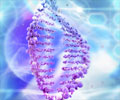Chemists at University of Illinois developed a possible new approach in characterizing neurotoxin structure in Alzheimer's disease.
Chemists at University of Illinois developed a possible new approach in characterizing neurotoxin structure in Alzheimer's disease.
Researchers believe that Amyloid plaques, clumps of fiber-like misfolded proteins, are the cause behind the devastating neurodegenerative disease.
They also managed to arrest and characterize a key transitional step in the formation of amyloid plaque fibers, or fibrils, showing tiny spheres averaging 20 nanometers in diameter assembling into sheet-like structures comparable to that seen in formation of fibrils.
Fibrils made of small proteins called amyloid-beta are toxic to nerve cells, but intermediate spheres, including those identified by Ishii's group, are more than 10 times as poisonous. That has made the spherical intermediates a new suspect for causing Alzheimer's disease.
"The problem with studying the structure of this intermediate form is that it's so unstable," Nature quoted Yoshitaka Ishii, associate professor of chemistry and the lead researcher of the study, as saying.
He added that his team's approach was to 'freeze-trap' the passing intermediate form, then use solid-state nuclear magnetic resonance to determine its structure and electron microscopes to study its morphology, or shape.
Ishii and his co-workers confirmed that the intermediate spherical stage of amyloid is more toxic than the final-form fibrils. Their findings are the first to identify sheet formation at the toxic intermediate stage in the misfolding of the Alzheimer's amyloid protein and support the notion that the process of forming the layered sheet structure might be what triggers toxicity and kills nerve cells.
"Our method characterized the detailed molecular structure of this unstable, intermediate species. To the best of our knowledge, this is the first characterization of detailed molecular structures for toxic amyloid intermediates. We found that the structure was very similar to the final (fibril) form, which wasn't expected at all,” Ishii said.
Ishii said a complete determination of the intermediate structure remains to be done, but he is confident his lab will be able to do that.
He said that once completed, the findings might provide pharmaceutical manufacturers with the information they need to create drugs that will prevent interaction between the toxic molecules and nerve cells.
Ishii said the method could also be applied to structural studies of proteins associate with other neurodegenerative diseases, including Parkinson's, and prion diseases, such as Creutzfeldt-Jakob.
"We're also interested in applying our technique in the nanoscience field to examine the formation process of peptide-based nano-assemblies," he said.
The findings were reported online in Nature Structural & Molecular Biology.
Source-ANIJD/P










